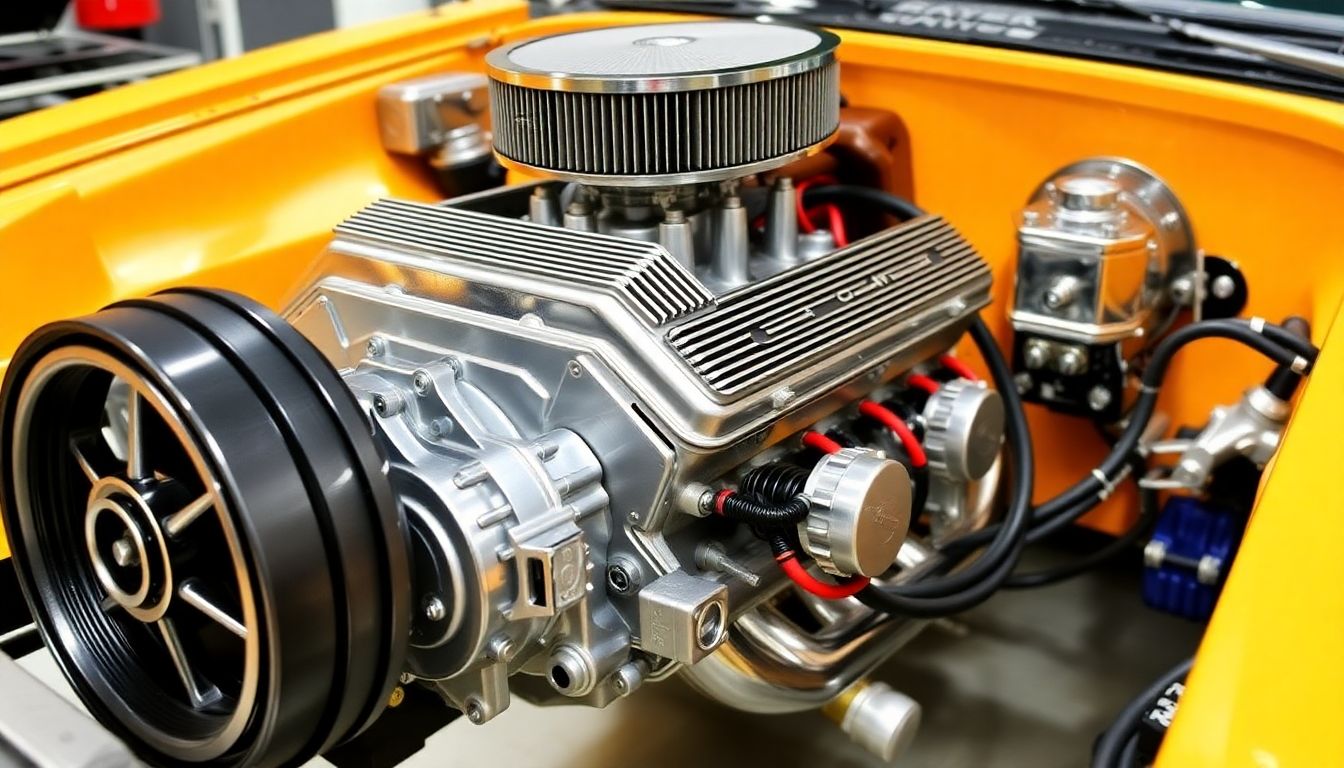Maximize Power, Speed, and Efficiency with Precision-Engineered Kits
Introduction
High-performance engine kits transform ordinary vehicles into extraordinary machines capable of delivering remarkable power and performance. These comprehensive packages mix carefully selected components designed to work in harmony, increasing an engine’s output, efficiency, and overall capabilities.
By providing a cohesive upgrade path, these kits eliminate guesswork and potential compatibility issues that often arise when piecing together individual performance parts.
Understanding the Basics
A high-performance engine kit typically includes upgraded internals, forced induction systems, and advanced engine management solutions. These components push the limits of what’s possible from a stock engine, allowing enthusiasts to achieve levels of performance that rival those of professional race teams.
Key Components of High-Performance Engine Kits
Forged Internals: The Foundation of Power
The heart of any high-performance engine build starts with the internals. Forged pistons, connecting rods, and crankshafts form the backbone of a robust engine capable of handling increased power and higher RPMs.
- Forged pistons offer significantly increased strength and durability compared to cast pistons. This allows for higher compression ratios and boost pressures without the risk of failure.
- The forging process aligns the metal’s grain structure, resulting in a denser, more uniform component that can withstand extreme heat and pressure.
- Forged connecting rods provide enhanced strength and reduced weight. This combination enables the engine to rev higher and respond more quickly to throttle inputs.
- The reduced reciprocating mass also decreases stress on other engine components, contributing to overall reliability.
- A forged crankshaft finishes the trio of critical internal components. It’s increased strength allows it to handle the higher torque loads associated with high-performance engines without flexing or failing.
Many aftermarket crankshafts also feature improved oiling passages and counterweighting for better lubrication and balance at high RPMs.
Forced Induction Systems: Breathing Life into Performance
Forced induction systems can dramatically increase engine performance by compressing the incoming air charge, allowing more fuel to be burned and more power to be produced. The two primary options are turbochargers and superchargers, each with it’s own set of advantages.
Turbochargers
Turbochargers harness the power of exhaust gases to spin a turbine, which in turn compresses incoming air and forces it into the engine. This results in substantial power gains, especially at higher RPMs. Modern turbocharger designs have largely mitigated the issue of turbo lag, providing more responsive power delivery across the rev range.
Advantages of turbochargers include:
- Excellent power-to-weight ratio
- Potential for very high power outputs
- Improved fuel efficiency at cruising speeds
- Compact packaging in many applications
Considerations for turbochargers:
- Increased complexity in installation and tuning
- Potential for heat management issues
- May need upgraded intercooling systems for optimal performance
Superchargers
Superchargers are belt-driven compressors that provide an immediate boost in power across the entire RPM range. They offer instant throttle response and a linear power delivery, making them popular for street applications.
Advantages of superchargers include:
- Instant throttle response
- Linear power delivery
- Simpler installation compared to turbochargers
- Often easier to tune for daily driving
Considerations for superchargers:
- May be less efficient than turbochargers at higher power levels
- Can place extra load on the engine’s accessory drive
- May need hood modifications for fitment in some applications
When selecting a forced induction system, consider your specific goals and driving style. Turbochargers often provide more top-end power and can be more fuel-efficient, while superchargers offer a more streetable power curve and simpler installation.
Engine Management Systems: The Brain of the Operation
With all these performance upgrades, it’s crucial to have a way to control and improve the engine’s operation. This is where advanced engine management systems come into play.
Modern ECUs (Engine Control Units) allow for precise tuning of:
- Fuel delivery
- Ignition timing
- Boost control in forced induction applications
- Variable valve timing (in applicable engines)
These systems often provide features like:
- Launch control for consistent acceleration from a standing start
- Flat-shift capabilities for quick gear changes without lifting off the throttle
- Data logging for performance analysis and fine-tuning
Proper tuning is essential to extracting the most performance from your engine kit while ensuring reliability and drivability. Many high-performance engine kits include pre-programmed ECU tunes designed to work with the specific components in the kit.
However, custom tuning by an experienced professional can often yield even better results, tailored to your specific engine and driving conditions.
Considerations and Challenges
Balancing Performance and Reliability
One of the biggest trade-offs in high-performance engine building is balancing reliability with outright performance. As you push the limits of an engine, you’re also pushing the limits of it’s components.
Investing in forged internals, race-spec bearings, and other high-quality components can help ensure your engine can handle the increased stresses of high-performance operation. It’s also crucial to consider supporting modifications like:
- Upgraded cooling systems to manage increased heat output
- Stronger transmission components to handle the increased power
- Enhanced oiling systems to maintain proper lubrication under high-stress conditions
- Upgraded fuel system components to support increased fuel demands
